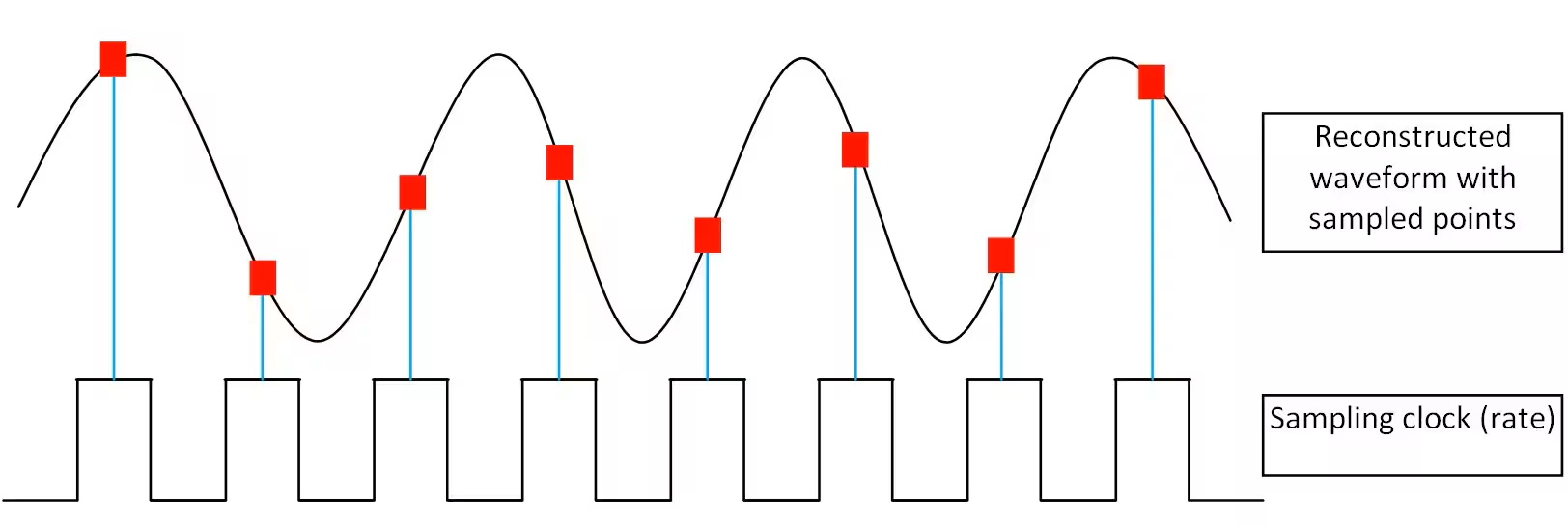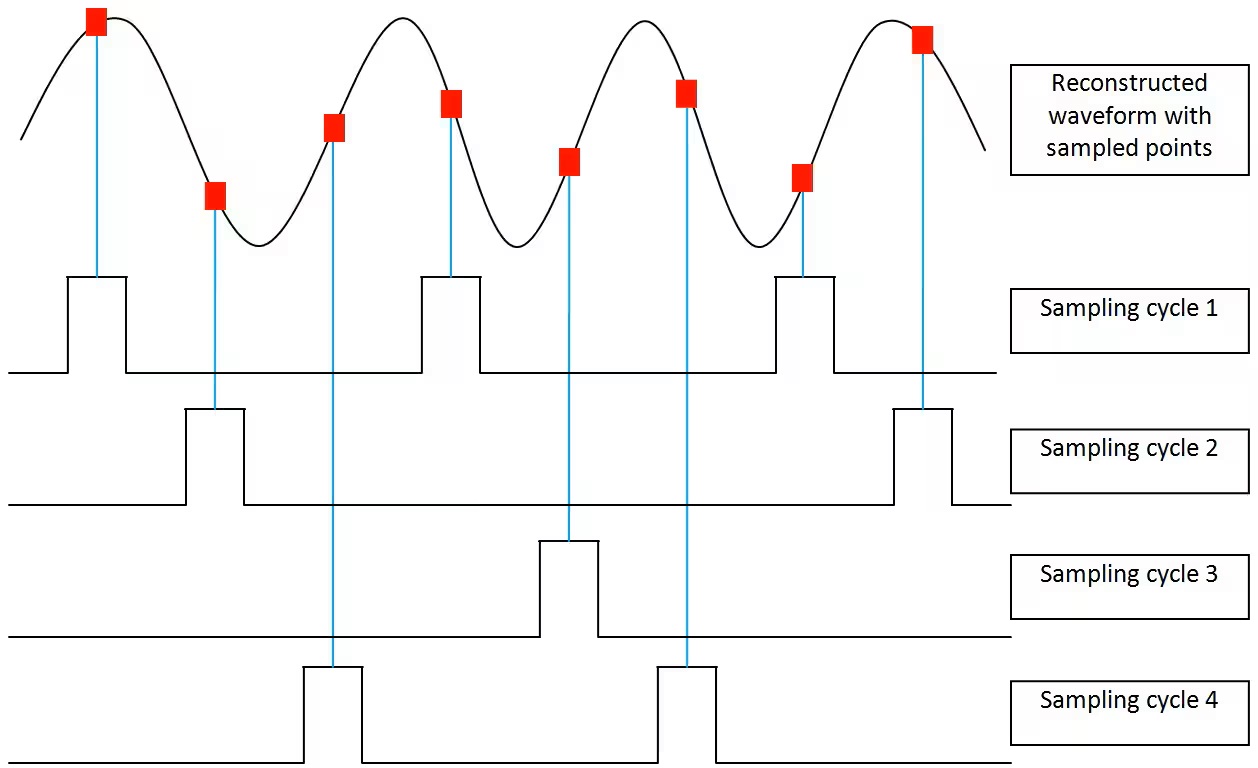Understanding Real Time and Equivalent Time Sampling
2020-01-15
Introduction
This article explains the primary differences between real time sampling and equivalent time sampling.
All digital storage oscilloscopes require sampling an analog input signal and displaying the samples on screen. Depending on the sampling method as well as the rate at which samples are taken, both can greatly affect the captured results. The sampling rate of an oscilloscope is one of the most important specifications that determine the performance and capabilities of a DSO.
Most, if not all, of B&K Precision's DSOs have the ability for the user to control between real time sampling and equivalent time sampling as the method for sampling the input signal(s).
Real Time Sampling
Real time sampling can be considered the "real" signal from the input being captured into the oscilloscope. This sampling method captures all samples from a single capture, up to the maximum the DSO is capable of. It is most often used for capturing single shot signals and the best resolution of the signal depends directly on the sample rate. Below is an illustration of real time sampling.

With real time sampling, samples are all captured consistently from a single trigger. All samples from previous triggers get erased. Because of this, it is ideal, for example, for capturing non-repetitive signals or signals that may have a random glitch that needs to be captured for analysis.
Equivalent Time Sampling
In the case of equivalent time sampling, it is most useful when capturing repetitive signals. This sampling method requires multiple sampling acquisitions at different clock timing, then reconstructed with all the samples taken from each acquisition and put together. Therefore, multiple triggers are required to capture enough points to reconstruct the waveform. Below is an illustration of how equivalent sampling works:

However, equivalent sampling is not ideal for capturing non-repetitive signals or signals that happen only in a quick instance. Because this method requires multiple sampling from multiple triggers before it can reconstruct the waveform, it might miss capturing the details of the event that's happening very quickly, such as a glitch.
Follow the considerations above before selecting the sampling method to get the best and most accurate test results from your DSO.